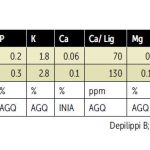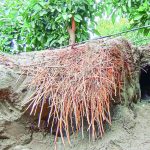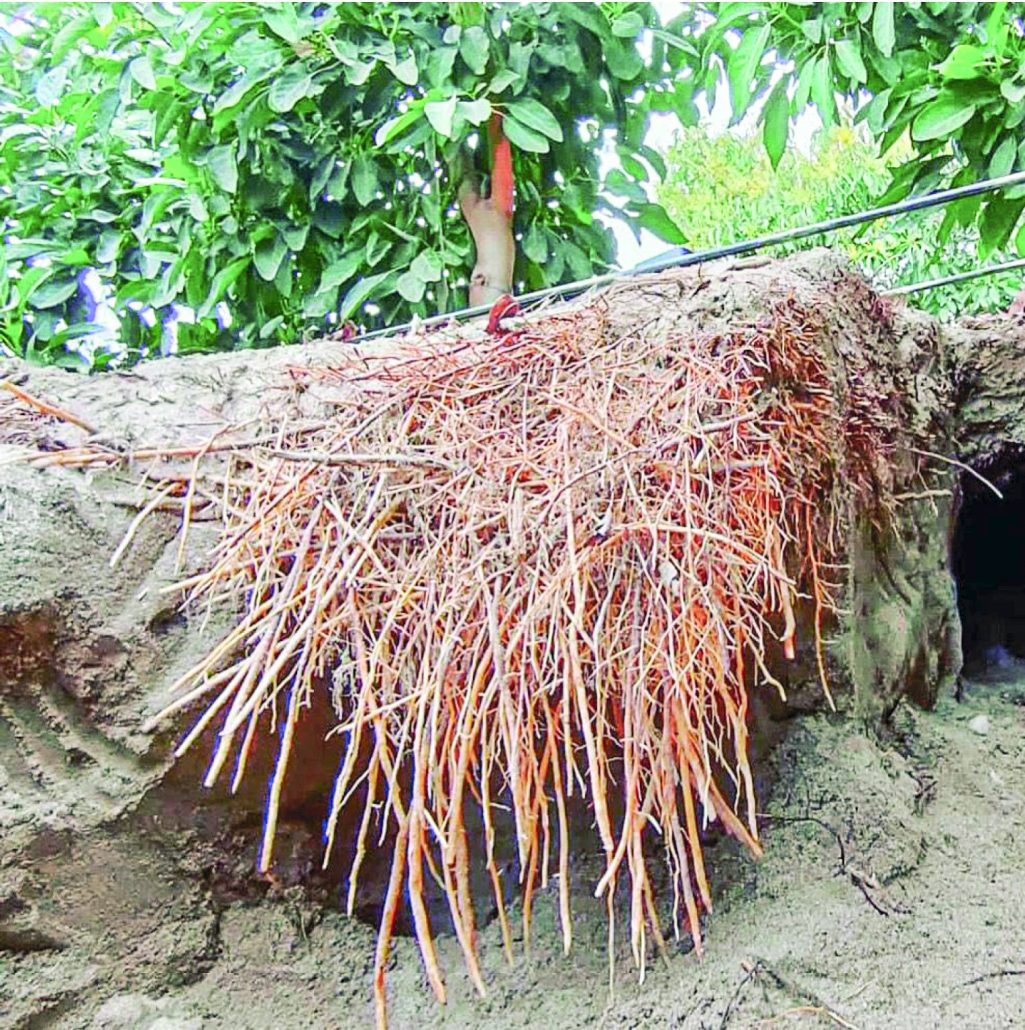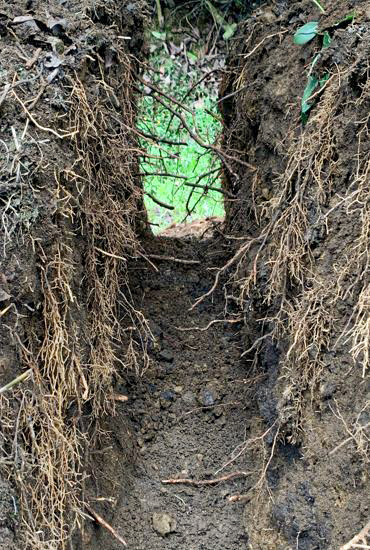



Although there are many factors that affect the quality of an avocado, there are elements that are fundamental. In the following lines, agronomist and international advisor Gonzalo Allendes addresses a series of recommendations to build better quality fruit from the field.

It stands out that, among the preharvest factors that affect fruit quality are internal nutrition and susceptibility to pathogenic attacks. However, its focus in this article is on two aspects of nutrition that affect internal postharvest quality: nitrogen and calcium in the pulp.
“Nitrogen is essential to have quality, but it is not the most important thing, the most important thing is called calcium, especially targeting the pulp,” says Allendes and adds that, to achieve a quality fruit that travels without problems to its destination , there are a series of variables to consider in order not to face problems of browning in the pulp or browning of vascular bundles, which in general, are highly related to calcium, and secondly with the levels of nitrogen that the pulp may have internally.
According to the advisor, to build a fruit that has good durability during the trip, and based on studies carried out by Dr. Bruno Defilippi (postharvest specialist) and Raúl Ferreyra (irrigation and drainage specialist), it is key that the fruit has a dry matter between 23% and 27%, with calcium levels in the pulp greater than 0.06% or 600 parts per million; that the nitrogen in pulp at the time of harvest is less than 1.1%, or 11,000 parts per million and a ratio of both that is less than 22.
For this reason, he explains that starting in 2020 and with the data collected by INIA experts, they managed to determine at AGQ Labs, where he worked at that time as technical director, some minimum parameters and ranges of all the elements necessary for a good post-harvest in avocado, the most important for the advisor being calcium – firstly – and then nitrogen. “With these ranges that we were able to determine for a fruit of nutritional quality, we have been working for four years without any problem.” (See box).

But beyond this, Allendes highlights that, for the correct nutrition and construction of a quality fruit, it is not enough to give the plant everything it requires but it does not have good root development or activity. “If I have poor root development, calcium absorption will be poor. Therefore, the first pillar to be able to have calcium in the pulp is to have root activity, if there are no roots, there is no absorption,” he says and highlights that, it is in the root where the quality of the fruit and the possibility of it absorbing are at stake. the elements that deliver said quality.
“The new roots are those that absorb phosphorus, key in the formation of ATP, energy for metabolism. The new roots are those that absorb calcium, key to post-harvest quality. Active roots absorb potassium, which is key to caliber, stomatal opening and closing. Without roots there is no absorption,” he highlights.
And new roots are not achieved only with rooting products, says the advisor, but it is necessary to control other factors that affect their development, such as: having a good balance of water and oxygen in the soil; manage soil compaction; the soil temperature influences; Very acidic pH inhibits, very low and very high electrical conductivity also play a role. “That’s why we have to think about how we can activate the roots and when we have to do root stimulation.”

NITROGEN IS NOT THE ENEMY
According to the advisor, nitrogen is not the enemy, in fact, it is the mineral macro element that the plant needs the most, the key is knowing how to use it. “The amount of nitrogen to be provided will depend on the present vigor or the desired vigor and the contribution will be decreased or increased depending on the objective achieved. “Having a tree with fruit and giving it nitrogen is not the same as having a tree without fruit and giving it nitrogen.”
The expert recalls that one of the theorists of this crop, Whiley, mentions that: “nitrogen is the most important mineral nutrient that determines production in avocado; Misalignments in its management can generate large vegetative growth to the detriment of production.” Whiley pointed out that nitrogen is not bad, but rather refers to imbalances.
In line with this, Allendes debunks another of the myths around nitrogen. “Nitrogen does not abort fruit. What I have seen is that, if a vigorous bud appears at the beginning of flowering, it aborts the flowers. But if I have flowers and there are no buds, it is absolutely necessary to provide nitrogen,” he says.
When to apply it? The advisor states that there are three key moments in the development of the plant in which nitrogen cannot be missing, however, he points out that whether to apply it or not will definitely depend on the analyzes carried out. The first moment of application is in full flower and fruit set. The second is in the rapid development of fruits and the third moment is in floral induction and differentiation.
“Nitrogen is absolutely necessary, it helps in cell division and the rapid development of fruits. Nitrogen is caliber, it is production, but you have to know how to manage it.”

CALCIUM IN PULP, KEY FACTOR IN QUALITY AND POST-HARVEST LIFE
Although nitrogen is the most important mineral nutrient that determines production, because good levels of nitrogen allow the production of good shoots and thus quality fruit, according to Allendes, to think about a good post-harvest life, the most important thing is the calcium.
As a first point, it says that the greatest absorption of calcium occurs in the first millimeters of the new roots. In fact, it has been described that the first 100 days or the first eight weeks is when calcium accumulates the most. In that sense, Allendes recommends doing a fruit analysis in the seventh or eighth week: if the calcium reading is over 3,000 ppm, you have to “be calm”, but if it is at 1,800 ppm, you have to “apply more calcium” or stimulate roots.
“The structure, hardness of the fruit and the browning are due to the calcium content it has, therefore, that is the challenge, putting calcium in the fruit. Furthermore, it must be kept in mind that the levels of diffuse coloration, browning and the incidence of anthracnose decrease significantly depending on the calcium value of the pulp,” says Allendes, but highlights that fertilizing with calcium is not synonymous with quality, because It is not fertilizing for the sake of fertilizing.
“Fertilizing with calcium is not synonymous with post-harvest quality of the fruit, given that if a favorable Ca/Mg ratio is not maintained during the first 8 to 10 weeks, the formation of cell walls will be deficient,” explains the advisor.
In line with this, he highlights that we must play with the relationships in soil solution or saturated paste, which are crucial to be able to force the entry of elements. Allendes explains that it has been described that calcium-magnesium ratios greater than four synergize the entry of calcium, but not only because of the calcium that is being supplied, but also because of the calcium that is in the soil.
In addition, there is a need to take care of electrical conductivity: if it increases in the root zone, the plant takes in less water, and if it takes in less water, less calcium enters. “It is essential to care about watering well and measuring conductivity in that period of the first eight weeks, for the life of the roots and for water absorption,” the advisor points out.